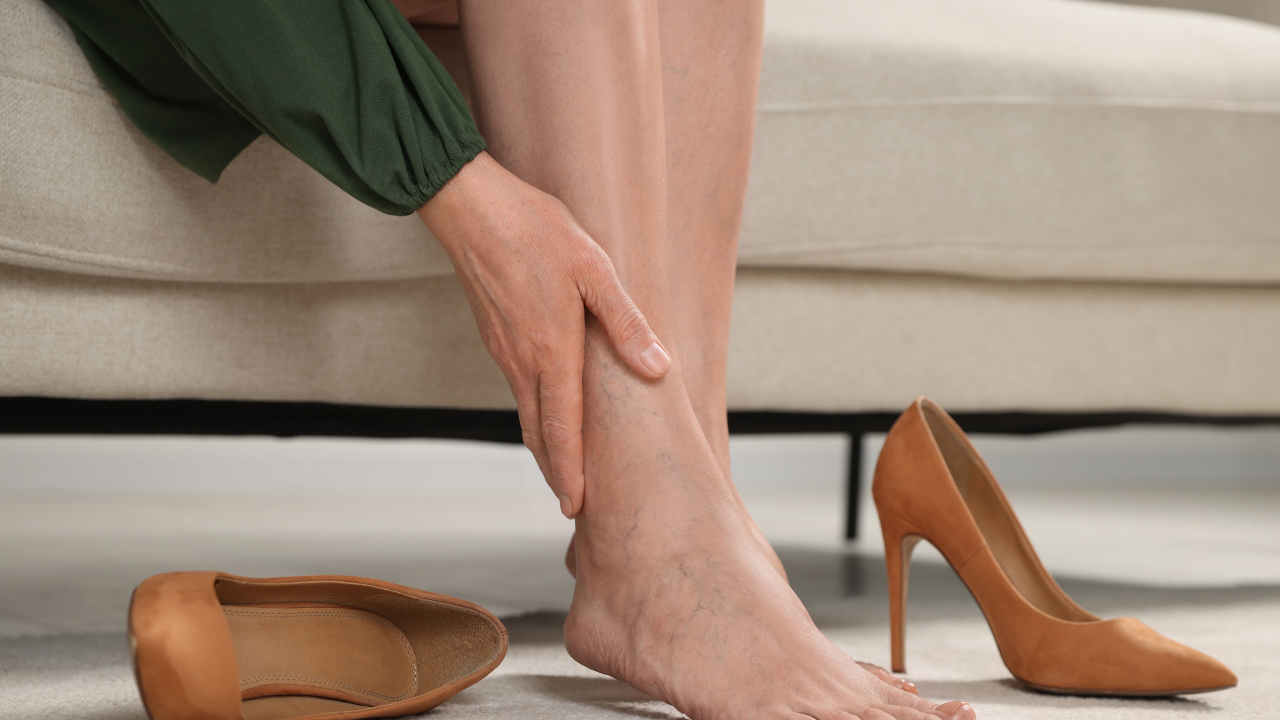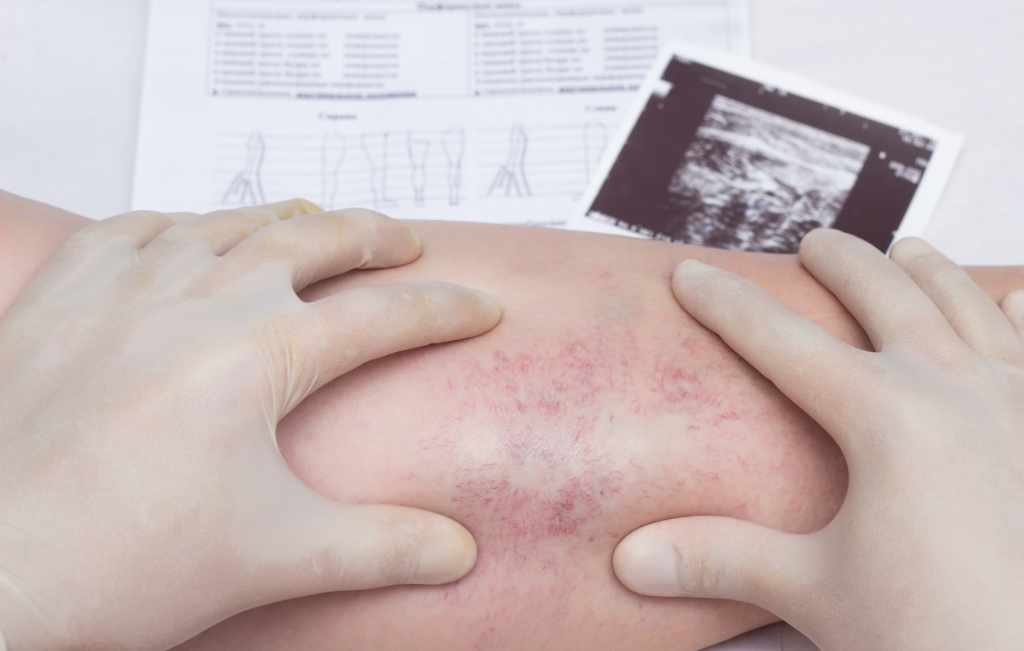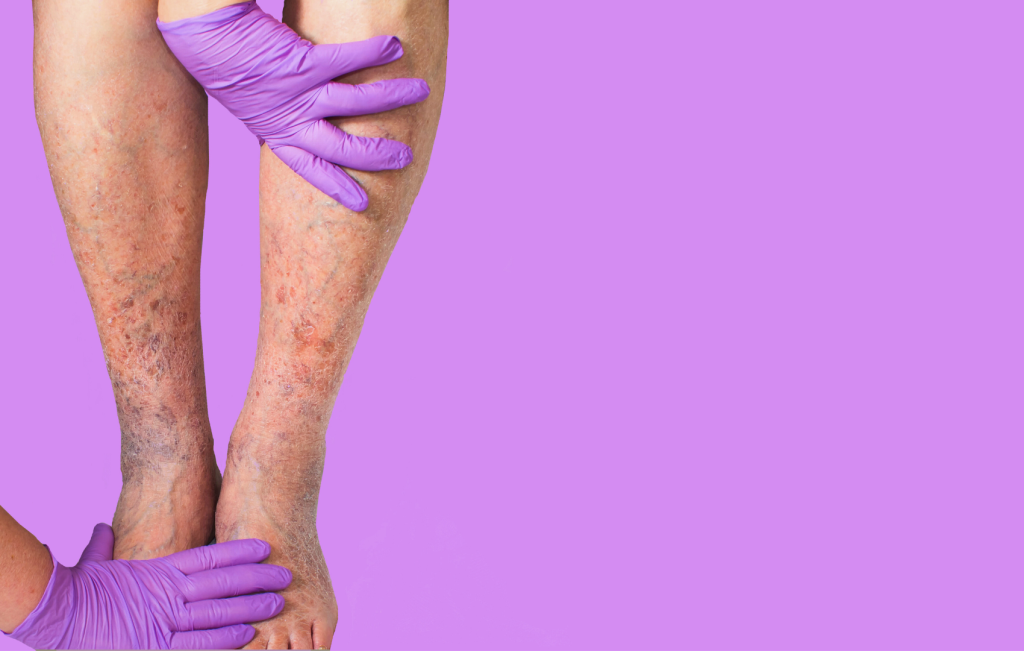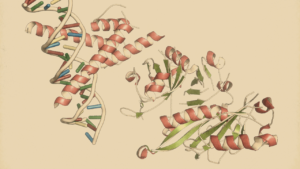Do You Know 6 Hidden Stages Of Chronic Venous Insufficiency?
Discover the various phases of Chronic Venous Insufficiency and effective ways to handle the condition.

Learn about the different stages of Chronic Venous Insufficiency (CVI) and how to manage the condition. Get the facts on the symptoms, diagnosis, and treatment options available.
CVI is a medical issue that is frequently disregarded by healthcare providers due to a lack of understanding of its severity and effects, as well as incomplete identification of the different ways it can present as a primary or secondary venous disorder3.
Poor blood flow in the legs, known as chronic venous insufficiency, can cause a variety of symptoms ranging from minor cosmetic issues to more serious problems2,3,4,5. This refers to various vein problems like spider veins, swollen veins, skin discoloration, and sores.

What is the Chronic Venous Insufficiency (CVI)?
CVI is a problem with your blood flow caused by faulty valves in your leg veins. This can happen in any vein, from the surface to deep inside your leg.
It reduces the speed of blood flow from your legs to your heart, which can lead to blood accumulating in your leg veins and causing bursts in the capillaries. These bursts may result in skin discoloration, pain, and ulcers if left untreated1.
As we get older, have a family history of vein problems, stand for long periods, are overweight, smoke, don't exercise much, have had leg injuries in the past, or have had blood clots before, we are more likely to develop chronic venous insufficiency. Women who are pregnant or have high levels of estrogen are also at risk6,7,8.
CVI is less common in Asians than non-Hispanic whites, as found by a study that included people from different ethnicities 9.
50% of people have unusual blood flow in their legs, but the exact number of people with chronic venous insufficiency (CVI) varies depending on the studies conducted on different populations6,10,11.
How Chronic Venous Insufficiency Affects the Body?
The main reason for the symptoms of CVI in the legs is high blood pressure in the veins due to problems with the valves or blockages in the flow3.
When the muscles in the foot are not moving, the pressure in the veins can be very high, up to 80-90 mmHg.
When someone has healthy veins, the pressure decreases to below 30 mmHg when they walk.
CVI can occur when any of the veins in your legs are damaged. These veins include those in your:
- Deep veins that run through your muscles
- Superficial veins that are close to your skin
- Perforating veins that connect the deep and superficial veins
In people with CVI, leg movements don't lower venous pressure as much as they should. When the valves in the perforator veins don't work properly, the high pressure from calf muscle movement can affect the skin's microcirculation and the superficial veins.
This is a condition where there is high blood pressure in the veins while walking.
After experiencing deep vein thrombosis (DVT), a condition called postthrombotic syndrome can occur, which results in high blood pressure in the veins due to blockage and damage to the valves13.
What are the things that increase the chances of getting CVI17?
- Old age
- History of deep vein thrombosis
- Not being active or moving much
- Taking birth control pills
- Leg injury
- Hypertension
Chronic venous disease is more likely to occur in older people20, those who are obese, and those with a family history of the condition21,22.
How Many Stages of Chronic Venous Insufficiency?
CEAP (clinical, etiologic, anatomic, pathophysiological) classifications are used to stage CVI and are currently the standard. The system was created in 1994, updated in 2004, and revised again in 2020 for clarification. They are a quick way to talk about the progress of CVI12.
The CEAP classification is a tool used to help doctors decide how to treat people with chronic venous insufficiency. It can predict how severe a person's symptoms are and how it affects their quality of life14,15,16.
CVI can be categorized in four different ways, but it is usually classified using the C or clinical classifications which are based on the development of the condition and can vary over time.
CVI causes discomfort, swelling, varicose veins, and changes in the skin or sores.
When you stand for a long time, your legs may feel heavy or achy. This is called venous leg discomfort. You can relieve it by raising your legs, wearing compression stockings, or walking.
Around 20% of patients with CVI don't experience leg discomfort, even though they have other clinical features. But for approximately 10% of patients, leg discomfort is the only clinical feature they have2.
Varicose veins can cause tenderness due to the swelling of the veins. Deep vein obstruction can cause venous claudication.
Swelling in the legs is a common symptom of CVI. It can be pressed down and changed throughout the day and when standing up18.
The CEAP clinical classification for CVI is as follows:
| Stages | Symptoms |
|---|---|
| C0 | No obvious features of venous disease |
| C1 | Presence of reticular or spider veins |
| C2 | Obvious varicose veins |
| C3 | Presence of edema but no skin changes |
| C4 | Skin discoloration and pigmentation |
| C5 | Healed ulcer |
| C6 | Acute ulcer |
C0
At the beginning stage of CVI, which is called C0, there are no obvious symptoms like swollen or bulging veins.
Your doctor may suggest making lifestyle changes such as exercising more and eating healthily to prevent the condition from getting worse. Losing weight can also help slow down the progression of CVI.
C1
This stage is characterized by the appearance of small, dilated veins near the surface of the skin, which are often called spider veins or telangiectasias.
People with CVI often feel like their legs are heavy and may experience swelling in the evenings. They may also have itchy, painful, or cramping legs at night3.
However, in the beginning, stages of chronic venous disease (C1-C2), there are no particular symptoms.
At the beginning of chronic venous disease, spider veins and reticular veins can appear around the ankles, which are known as "warning veins".
Telangiectases are small veins in the skin that are wider than usual, while reticular veins are larger and deeper under the skin23.
Although they are not conclusive evidence of CVI, they are mainly a cosmetic concern for patients20, 23.
C2
Varicose veins are larger, bulging veins that are often twisted or gnarled in appearance. In this stage, the varicose veins are clearly visible and may cause discomfort or pain.
These are veins under the skin that don't work well and are wider than 3mm24.

If the problem is not fixed, the veins can become bigger and visible to the naked eye.
The occurrence of chronic venous disease and CVI varies greatly depending on the study group, classification, and approach. However, about 25% of the population has varicose veins with or without edema (CEAP stage C2-C3), while up to 5% have trophic skin changes such as leg ulcers (C4-C6)19.
C3
Edema is a condition in which excess fluid builds up in the tissues, causing swelling. In this stage, there may be noticeable swelling in the legs, but there are no visible changes to the skin.
Swelling in the legs, which goes away overnight but can become permanent if not treated, along with varicose veins, indicates the start of a condition called CVI. This condition causes blood pressure to increase and can lead to red blood cells leaking out and causing dark spots on the skin25.
Long-term swelling can cause a skin condition called stasis dermatitis, which shows up as red, scaly, and sometimes itchy patches on the lower legs. People sometimes confuse it with a bacterial infection called erysipelas or cellulitis23.
C4
As CVI progresses, the skin may begin to change color or become discolored. This can manifest as brown or reddish-brown patches or areas of pigmentation.
If chronic venous insufficiency continues, it can cause a condition called lipodermatosclerosis. This condition causes inflammation in the skin and tissue under the skin, which can lead to redness, hardening, scarring, and sometimes pain. If left untreated, it can lead to ulcers26.
C5
In this stage, the patient has had a venous ulcer in the past, but it has healed.
C6
This stage is characterized by the presence of an open, non-healing ulcer on the skin, typically on the lower leg.
A venous leg ulcer is a serious problem that occurs in about 0.7% of people with CVI, mostly affecting the medial malleolus. It takes a long time to heal completely and needs prolonged wound treatment20.
CVI can cause blood clots that may lead to serious problems. Sometimes, a less common condition called superficial thrombophlebitis can occur, which causes a red, painful, hard, and warm lump or cord27.
Around 18-25% of patients may experience deep vein thrombosis (DVT) and about 7% may have pulmonary embolism as a result of this condition28, 29.
After a deep vein blood clot, around 20 to 50 percent of patients experience postthrombotic syndrome (PTS)30, 31.
PTS is a condition where the deep veins are blocked and can cause problems like faulty valves, high blood pressure in the veins, and abnormal blood flow.
It's important to note that not all patients with CVI will progress through all of these stages, and the severity of symptoms can vary widely between individuals.
Treatment options for CVI will depend on the stage and underlying causes of the condition.
Outlook
CVI is a serious condition that can cause a lot of problems. If left untreated, it can get worse over time and lead to painful ulcers that are hard to heal. Even with treatment, the ulcers can come back if the underlying problem of high blood pressure in the veins is not addressed.
Around 60% of people with a condition called phlebitis will develop a more serious problem called deep vein thrombosis. This can cause severe bleeding. Unfortunately, surgery for this condition is not effective, and it can be very expensive for patients.
Prevention
The first step in treating CVI is to use non-invasive methods to reduce symptoms and prevent further complications and worsening of the disease3.
Compression stockings are the primary way to treat a condition without surgery or medication 32.
Wearing compression stockings can help reduce pain, swelling, and bulging veins, as well as promote the healing of venous ulcers and prevent them from coming back 33, 34.
The patient needs to regularly check their skin for any damage or infections and apply moisturizer to keep it healthy.
Using moisturizers that contain lanolin can help prevent cracking and damage to very dry skin3.
Patients should be told to raise their legs to reduce swelling.
Don't stand or sit for too long. When you are on a long car or plane journey, move your legs, feet and ankles every 30 minutes by bending and stretching them about 10 times. This will help your blood circulation in your legs. If you have to stand for a while, take frequent breaks to sit down and raise your feet.
Encourage patients to keep their weight in a healthy range and find out what might be stopping them from losing weight, like mental health problems, certain medicines that cause weight gain, or physical limitations such as knee problems.
Patients need to know that chronic venous disease is a health problem that lasts a long time. It is important to see your healthcare provider regularly and follow their treatment plan to prevent any problems.
The Bottom Line
Chronic venous disease is a common problem that happens when the veins don't work properly and cause blockages or leaks.
Common signs are swelling and a sensation of heaviness in the legs, along with itching, discomfort, and cramps at night.
CVI staging assists doctors in determining the advancement of your condition, which in turn helps them suggest appropriate treatments. Maintaining lower stages of CVI minimizes the likelihood of skin harm and severe complications.
Compression therapy is an important treatment for long-term vein problems. It is simple to use, does not require surgery, and helps by squeezing the veins and improving the muscles that help blood flow.
Frequently Asked Questions
What is the most common cause of chronic venous insufficiency?
What are the treatments for chronic venous insufficiency?
The goals of treatment are to:
Improve the circulation of your blood in your veins
Assist in the healing of ulcers and decrease the likelihood of their recurrence.
Make your skin look better
Reduce pain and swelling
Can chronic venous insufficiency be reversed?
Chronic venous insufficiency cannot be completely cured, but you can control it by changing your lifestyle and following your healthcare provider's recommended treatments.
References
Fitnature uses only high-quality sources, including peer-reviewed studies, to support the facts within our articles. Read our editorial process to learn more about how we fact-check and keep our content accurate, reliable, and trustworthy.
- Baliyan, Vinit, et al. “Lower Extremity Venous Reflux.” Cardiovascular Diagnosis and Therapy, vol. 6, no. 6, Dec. 2016, pp. 533–43, https://doi.org/10.21037/cdt.2016.11.14.
- Brand, F. N., et al. “The Epidemiology of Varicose Veins: The Framingham Study – PubMed.” American Journal of Preventive Medicine, vol. 4, no. 2, Apr. 1988.
- Callam, M. J. “Epidemiology of Varicose Veins – PubMed.” The British Journal of Surgery, vol. 81, no. 2, Feb. 1994, https://doi.org/10.1002/bjs.1800810204.
- Chamanga, Edwin Tapiwa. “Understanding Venous Leg Ulcers – PubMed.” British Journal of Community Nursing, vol. 23, no. Sup9, Sept. 2018, https://doi.org/10.12968/bjcn.2018.23.Sup9.S6.
- Choonhakarn, Charoen, et al. “Lipodermatosclerosis: A Clinicopathologic Correlation – PubMed.” International Journal of Dermatology, vol. 55, no. 3, Mar. 2016, https://doi.org/10.1111/ijd.12856.
- “Chronic Venous Insufficiency.” Johns Hopkins Medicine, 8 Aug. 2021, https://www.hopkinsmedicine.org/health/conditions-and-diseases/chronic-venous-insufficiency. Accessed 7 Apr. 2023.
- Criqui, Michael H., et al. “Chronic Venous Disease in an Ethnically Diverse Population The San Diego Population Study.” American Journal of Epidemiology, vol. 158, no. 5, Sept. 2003, https://doi.org/10.1093/aje/kwg166.
- Danielsson, Gudmundur, et al. “The Influence of Obesity on Chronic Venous Disease – PubMed.” Vascular and Endovascular Surgery, vol. 36, no. 4, Aug. 2002, https://doi.org/10.1177/153857440203600404.
- Decousus, Hervé, et al. “Superficial Venous Thrombosis and Venous Thromboembolism: A Large, Prospective Epidemiologic Study – PubMed.” Annals of Internal Medicine, vol. 152, no. 4, Feb. 2010, https://doi.org/10.7326/0003-4819-152-4-201002160-00006.
- Dissemond, Joachim, et al. “Compression Therapy in Patients with Venous Leg Ulcers – PubMed.” Journal Der Deutschen Dermatologischen Gesellschaft = Journal of the German Society of Dermatology : JDDG, vol. 14, no. 11, Nov. 2016, https://doi.org/10.1111/ddg.13091.
- Eberhardt, Robert T., and Joseph D. Raffetto. “Chronic Venous Insufficiency – PubMed.” Circulation, vol. 130, no. 4, July 2014, https://doi.org/10.1161/CIRCULATIONAHA.113.006898.
- Eklöf, Bo, et al. “Revision of the CEAP Classification for Chronic Venous Disorders: Consensus Statement – PubMed.” Journal of Vascular Surgery, vol. 40, no. 6, Dec. 2004, https://doi.org/10.1016/j.jvs.2004.09.027.
- Evans, C. J., et al. “Prevalence of Varicose Veins and Chronic Venous Insufficiency in Men and Women in the General Population: Edinburgh Vein Study.” Journal of Epidemiology and Community Health, vol. 53, no. 3, Mar. 1999, https://doi.org/10.1136/jech.53.3.149.
- Garcia, Raudel, et al. “Present and Future Options for Treatment of Infrainguinal Deep Vein Disease – PubMed.” Journal of Vascular Surgery. Venous and Lymphatic Disorders, vol. 6, no. 5, Sept. 2018, https://doi.org/10.1016/j.jvsv.2018.01.010.
- Kahn, Susan R., et al. “The Postthrombotic Syndrome: Evidence-Based Prevention, Diagnosis, and Treatment Strategies: A Scientific Statement from the American Heart Association – PubMed.” Circulation, vol. 130, no. 18, Oct. 2014, https://doi.org/10.1161/CIR.0000000000000130.
- Katz, M. L., et al. “Variability of Venous-Hemodynamics with Daily Activity – PubMed.” Journal of Vascular Surgery, vol. 19, no. 2, Feb. 1994, https://doi.org/10.1016/s0741-5214(94)70111-3.
- Kurz, X., et al. “Chronic Venous Disorders of the Leg: Epidemiology, Outcomes, Diagnosis and Management. Summary of an Evidence-Based Report of the VEINES Task Force. Venous Insufficiency Epidemiologic and Economic Studies – PubMed.” International Angiology : A Journal of the International Union of Angiology, vol. 18, no. 2, June 1999.
- Lurie, Fedor, and Marc Passman. “What Is New in the 2020 Update of the CEAP Classification?” International Angiology, vol. 39, no. 5, Nov. 2020, https://doi.org/10.23736/s0392-9590.20.04440-5.
- Minno, M. N. D. Di, et al. “Prevalence of Deep Vein Thrombosis and Pulmonary Embolism in Patients with Superficial Vein Thrombosis: A Systematic Review and Meta-Analysis – PubMed.” Journal of Thrombosis and Haemostasis : JTH, vol. 14, no. 5, May 2016, https://doi.org/10.1111/jth.13279.
- Morrone, Doralisa, and Vincenzo Morrone. “Acute Pulmonary Embolism: Focus on the Clinical Picture.” Korean Circulation Journal, vol. 48, no. 5, May 2018, pp. 365–81, https://doi.org/10.4070/kcj.2017.0314.
- Motykie, G. D., et al. “Evaluation of Therapeutic Compression Stockings in the Treatment of Chronic Venous Insufficiency – PubMed.” Dermatologic Surgery : Official Publication for American Society for Dermatologic Surgery [et Al.], vol. 25, no. 2, Feb. 1999, https://doi.org/10.1046/j.1524-4725.1999.08095.x.
- Musil, Dalibor, et al. “Risk Factors for Superficial Vein Thrombosis in Patients with Primary Chronic Venous Disease – PubMed.” VASA. Zeitschrift Fur Gefasskrankheiten, vol. 45, no. 1, Jan. 2016, https://doi.org/10.1024/0301-1526/a000497.
- Partsch, H. “Varicose Veins and Chronic Venous Insufficiency – PubMed.” VASA. Zeitschrift Fur Gefasskrankheiten, vol. 38, no. 4, Nov. 2009, https://doi.org/10.1024/0301-1526.38.4.293.
- Patel, Shivik K., and Scott M. Surowiec. “Venous Insufficiency.” NCBI Bookshelf, 1 Aug. 2022, https://www.ncbi.nlm.nih.gov/books/NBK430975/#:~:text=C1%3A%20the%20presence%20of%20reticular,C4%3A%20skin%20discoloration%2C%20pigmentation. Accessed 10 Apr. 2023.
- Rabe, E., et al. “Thieme E-Journals – Phlebology / Abstract.” Phlebologie, vol. 32, no. 01, pp. 1–14, https://doi.org/10.1055/s-0037-1617353. Accessed 10 Apr. 2023.
- Rabe, Eberhard, et al. “[Epidemiology of Chronic Venous Diseases] – PubMed.” Wiener Medizinische Wochenschrift (1946), vol. 166, no. 9–10, June 2016, https://doi.org/10.1007/s10354-016-0465-y.
- Raju, Seshadri, and Peter Neglén. “Clinical Practice. Chronic Venous Insufficiency and Varicose Veins – PubMed.” The New England Journal of Medicine, vol. 360, no. 22, May 2009, https://doi.org/10.1056/NEJMcp0802444.
- Santler, Bettina, and Tobias Goerge. “Chronic Venous Insufficiency – a Review of Pathophysiology, Diagnosis, and Treatment.” JDDG: Journal Der Deutschen Dermatologischen Gesellschaft, vol. 15, no. 5, May 2017, pp. 538–56, https://doi.org/10.1111/ddg.13242.
- Schwahn-Schreiber, C., et al. “[S1 Guideline on Intermittent Pneumatic Compression (IPC)] – PubMed.” Der Hautarzt; Zeitschrift Fur Dermatologie, Venerologie, Und Verwandte Gebiete, vol. 69, no. 8, Aug. 2018, https://doi.org/10.1007/s00105-018-4219-1.
- Stacey, M. C., et al. “The Influence of Dressings on Venous Ulcer Healing–a Randomised Trial – PubMed.” European Journal of Vascular and Endovascular Surgery : The Official Journal of the European Society for Vascular Surgery, vol. 13, no. 2, Feb. 1997, https://doi.org/10.1016/s1078-5884(97)80015-9.
- Zöller, B., et al. “Family History and Risk of Hospital Treatment for Varicose Veins in Sweden – PubMed.” The British Journal of Surgery, vol. 99, no. 7, July 2012, https://doi.org/10.1002/bjs.8779.
Review date not set.
How we reviewed this article:
Latest on:





